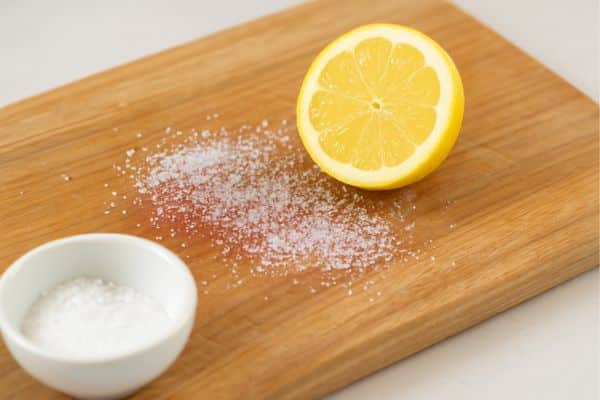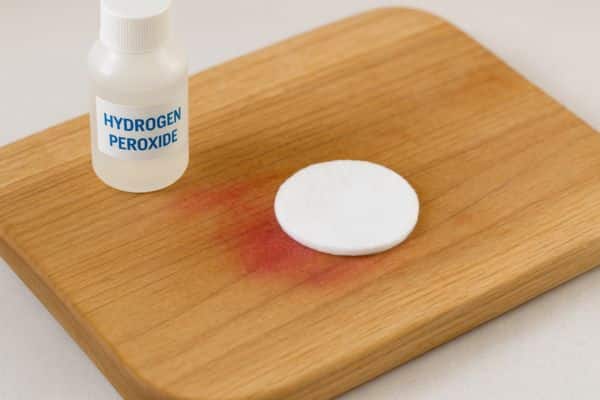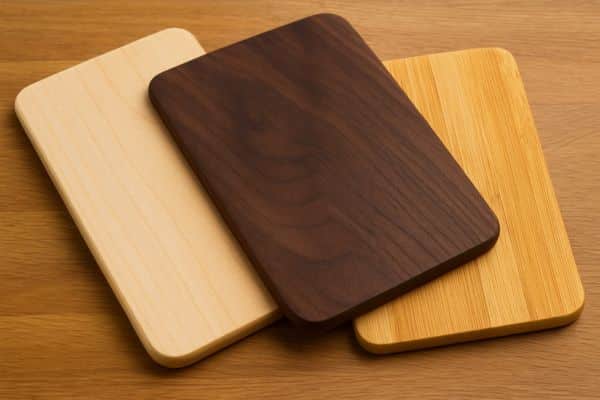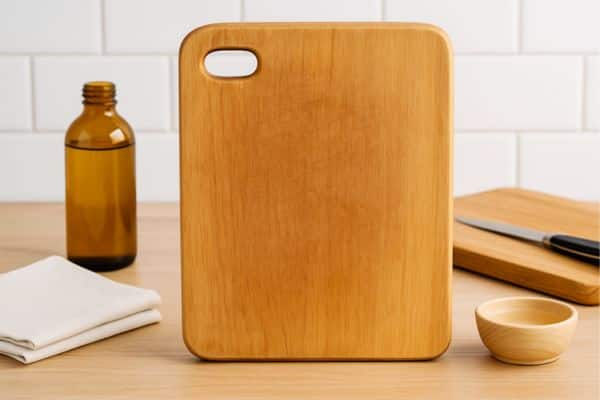I still remember the day my cutting board turned pink. I had just sliced a few strawberries for breakfast. Then came some blueberries and raspberries. The colours were bright. The juice soaked right in. I wiped the board, but the stains stayed. It looked dirty. I felt annoyed. That board had been with me for years. I didn’t want to lose it to a few fruits. That’s how I started learning how to get fruit stains out of wood cutting board. I tried easy tricks. Some worked. Some didn’t. Over time, I found what helps. This guide is based on my own experience. You’ll learn simple steps that work fast. I’ll also show how to get strawberry stain out without harsh tools. It’s safe. It’s easy.
What to Do Right After the Stain Happens
Fruit juice soaks in fast. A clean board can turn red in seconds. Strawberries, blackberries, or any juicy berry leave marks that sink deep.
First, stop cutting. Grab a paper towel. Press it on the stain. Do not rub. Rubbing spreads the stain. Pressing lifts it off.
This step matters. Fresh stains are easier to clean than old ones. A fast blot often keeps the board from getting worse.
Still worried? You’re not alone. Many people ask how to remove berry stains. It starts right here. Catch it early, and you skip the hard part later.
Step-by-Step: How to Get Fruit Stains Out of Wood Cutting Board
Some stains lift fast. Others need more time. Try these safe and simple methods that have worked for me every time.
Salt and Lemon Scrub (Best for Fresh Stains)

This is a fast, natural way to treat berry juice.
- Sprinkle coarse salt on the stain
- Cut a lemon in half
- Scrub the salt with the lemon (cut side down)
- Let it sit for five minutes
- Wipe with a damp cloth
- Dry the board right away
This helps with new stains and fresh juice. I use it right after cutting strawberries or raspberries on my board. For tougher tasks like carving meat, check out the best cutting board for brisket to keep things clean and easy.
Baking Soda Paste (For Mild to Set Stains)
This method is safe and works well for older marks.
- Mix baking soda with water (just enough to form a paste)
- Spread it over the stain
- Rub gently with a clean sponge or cloth
- Let it sit for ten minutes
- Rinse and dry fully
This works great for set-in spots. It’s also safe for most types of wood.
Hydrogen Peroxide (For Deeper or Older Stains)

Use this only on light-colored boards like maple or beech.
- Pour 3% hydrogen peroxide on a cotton pad
- Place it on the stain
- Let it sit for five minutes
- Check the area
- Wipe off with water
- Dry the board completely
This helps with deep red stains from things like strawberry juice or blackberries.
Always test a small spot first. This can lighten the wood.
What About Those Black Spots?
Not all marks are from berries. Some spots turn dark over time. These may come from mold, mildew, or old fruit juice.
Black spots on wood cutting board often mean the wood got wet and stayed damp. The board may not have dried well. Juice and moisture can seep deep, making it hard to clean with normal soap.
To treat them:
- Mix equal parts vinegar and water
- Dip a cloth into the mix
- Press and wipe the black area
- Let it sit for five minutes
- Rinse and dry the board upright
Still there? Try baking soda paste. Rub it in. Let it sit. Wipe clean. If the mark stays, the board may be damaged inside.
Here’s my rule: If the spot smells, keeps growing, or won’t clean, it’s time to let the board go. Deep black spots can mean the wood is no longer safe for food.
Wood Type Matters: Cleaning Tips by Board Type

Not all boards react the same. The type of wood changes how stains behave. Some soak in more. Some hold up better.
Maple is the most common. It’s strong but light in colour. That means stains show up fast. Lemon and baking soda work well here. It’s easy to clean, but you must act fast.
Walnut is darker and denser. It hides light stains better. But deep juice stains can still seep in. Use gentle cleaners like baking soda paste. Avoid bleach or peroxide, which can discolour it.
Bamboo is not true wood. It’s harder and resists moisture. It stains less but dries out fast. Scrubbing too hard may damage the surface. A light lemon rub works best.
Each board needs its own care. Know the wood. Treat it right. Your board will last longer and stay cleaner.
Pro Tips to Prevent Future Stains

Cleaning is good. But preventing stains is even better. A few small habits can save your board from lasting marks.
Oil it often. I use food-safe mineral oil once every two weeks. Rub it in with a cloth. Let it soak, then wipe off the extra. This keeps juice from sinking in.
Dry the board standing up. Laying it flat keeps water trapped. Drying upright lets air move through. That means less mold, less smell, and fewer black spots.
Never soak your board. A quick rinse is fine. But long water time makes the wood swell. It weakens the board and invites stains.
Use a separate board for fruits. I keep one just for berries. It’s a small habit that makes a big difference. Juice doesn’t mix with meat, and cleaning gets easier.
When to Replace a Cutting Board
Even the best boards wear out. No board lasts forever. Some signs tell you it’s time to let go.
Deep grooves are a warning. Knife cuts hold in juice, dirt, and bacteria. Once they get too deep, you can’t clean them well.
Persistent black spots are another sign. If spots return after cleaning or spread over time, the wood may be damaged inside.
Bad smells that won’t leave? That means bacteria may have settled in. If soap, lemon, and air don’t help, it’s time for a new board.
Final Thoughts
Your cutting board isn’t just wood. It’s part of your kitchen story. With care, it can last for years. Keep it clean. Act fast on stains. Use salt, lemon, or baking soda. Try peroxide for deeper marks. Blot fresh juice right away. Oil the board. Let it dry upright. Never soak it. These simple habits make a big difference. They keep your board safe, fresh, and ready for more. I’ve saved many boards with these steps.


